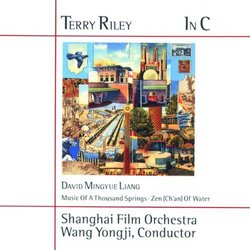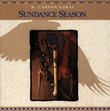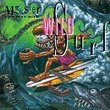| All Artists: Shanghai Film Orchestra, David Mingyue Liang, Terry Riley Title: Terry Riley: In C; Liang: Music of a Thousand Springs; Zen (Ch'an) of Water Members Wishing: 2 Total Copies: 0 Label: Celestial Harmonies Release Date: 1/23/1992 Genres: International Music, Jazz, Special Interest, New Age, Pop, Classical Styles: Far East & Asia, Jazz Fusion, Easy Listening, Chamber Music Number of Discs: 1 SwapaCD Credits: 1 Other Editions: Terry Riley: In C UPC: 013711302622 |
Search - Shanghai Film Orchestra, David Mingyue Liang, Terry Riley :: Terry Riley: In C; Liang: Music of a Thousand Springs; Zen (Ch'an) of Water
 | Shanghai Film Orchestra, David Mingyue Liang, Terry Riley Terry Riley: In C; Liang: Music of a Thousand Springs; Zen (Ch'an) of Water Genres: International Music, Jazz, Special Interest, New Age, Pop, Classical
Terry Riley's In C, one of the most influential compositions of the past quarter century, has been played by almost every conceivable combination of instruments; however, the Shanghai Film Orchestra's version ranks as o... more » |
Larger Image |
CD DetailsSynopsis
Album Description Terry Riley's In C, one of the most influential compositions of the past quarter century, has been played by almost every conceivable combination of instruments; however, the Shanghai Film Orchestra's version ranks as one of the most exciting and exotic interpretations. It marks the 25th anniversary of the piece, and represents the first time a Western new music piece has been recorded in China. In C is a rhythmic, energetic work, but it also echoes the mystical, embroidered music of the Near East and India. By staying in or around the key of C, this 1964 work creates a model sound that can be seen as a forerunner of today's minimalist and world music styles. The Shanghai Film Orchestra plays this contemporary Western work on traditional Chinese instruments. The tuning is different, and the tone colors of the ancient Chinese bells and strings lend a new vibrancy to the piece. The construction of this version is equally striking. Instead of following the score straight through, earlier parts are brought back and woven into a tapestry of sound even more mesmerizing than Riley's original recording. The talented Chinese-American composer, David Mingyue Liang, contributes two works that extend the orchestra's range to include the ethereal sounds of bowed vibes and the haunting resonance of China's only complete set of mangluo gongs. This remarkable recording, the result of a cultural openness in China, proves that the East and West have much to say to each other. Similar CDs
|
CD ReviewsRepetition _and_ chance DAC Crowell | 04/04/2000 (5 out of 5 stars) "Ting, ting, ting, ting, ting, ting, ting, ting...that's how this starts, with a drumming pulse on the top Cs on a piano. Then gradually, a whole tapestry of interlocking sounds starts to unfold, and you're slowly getting immersed in 'In C'. You don't really listen to this piece; the effect is much more like that aforementioned 'immersion', as the very gradual shifting of the patterns is more like organic growth, instead of the architectural jumps and skips found in Philip Glass or Steve Reich's works. How this is accomplished is by the use of a very selective variant on chance processes; since performers aren't given direct instructions on when to change from one ostinato to the next, this slow, 'oozing' shifting occurs, and it's quite fascinating (as opposed to what one reviewer here seems to think). It's certainly not an easy work to wrap your head around, unlike Glass, etc, but both the music and the ideas behind it are most rewarding. A critical work." Still the Best Recording L. Zajicek | San Diego, CA | 12/29/2005 (5 out of 5 stars) "Minimalism has produced five masterpieces: Philip Glass' "Music in Twelve Parts" and "Einstein on the Beach," La Monte Young's "The Well-Tuned Piano" (good luck finding that one!), Steve Reich's "Music for 18 Musicians," and Terry Riley's "In C." Although there are several recordings of "In C", each with a different orchestration, this one is probably still the best recording after all is said and done. (I only wish Mr. Riley would make a much longer recording, AT LEAST two hours long.)" Very important minimalist work Jeffrey J.Park | Massachusetts, USA | 01/13/2008 (5 out of 5 stars) "The compositional approach of Terry Riley and his pioneering minimalist work In C had a measurable impact on late 1960s and early 1970s musicians that wished to fuse more experimental styles with rock music. In fact, the Swedish group International Harvester is a pretty good example of this, not to mention some of the music of 1970-period Soft Machine.
Written in 1964 (Riley prepared a 53 figure score of sorts which is reproduced in the liner notes), In C is classified as an aleatoric composition; that is, the element of chance plays a significant role in determining what the musicians play. Based on what I have read, performances of In C can last from 15 minutes to two hours and the piece is intended for any number of performers; amateur and trained virtuoso alike. On this 1968 recording, Terry performs with ten individuals from the Center for Creative and Performing Arts at SUNY (Buffalo, New York) and the performance lasts for approximately 42 minutes. Instrumentation includes saxophone (played by Terry Riley), bassoon, clarinet, oboe, viola, flute, trumpet, trombone, vibraphone and marimbaphone. Central to the performance is a piano part referred to as the "pulse" which is provided by Margaret Hassell. As described in the liner notes, the "pulse" consists of even octave eighth notes played on the top two C notes of the piano, which can clearly be heard at the beginning of the piece. The ensemble plays in sync with this pulse. The composition itself consists of a dense and subtly changing ostinato network. That is, each performer repeats a single part that is gradually changed, which in turn cues the other performers to also subtly alter what they are playing. As can be imagined, this music takes a great deal of skill and a highly developed ability to listen to the other players. Really good performances can get fairly complex and consist of a writhing mass of ever-shifting ostinati. Although several versions of In C are floating around out there (ranging from one by Japanese psychedelic rock outfit Acid Mothers Temple In C to a version by Bang on a Can Terry Riley: In C), I have not listened to them - as such I can not gage the relative quality of this 1968 performance. Suffice it to say that the changes within this version of In C are subtle (yet exciting), and listening to the entire work requires great concentration and patience on the part of the listener. While it is difficult to remain still amidst the furious bustle of 21st century living, e.g. kids, work etc... (even for 45 minutes), I found that making the effort was worth it. This album is very highly recommended along with A Rainbow in Curved Air (1969). Other influential minimalist composers include Steve Reich, Philip Glass and Lamonte Young. " |

 Track Listings (3) - Disc #1
Track Listings (3) - Disc #1
